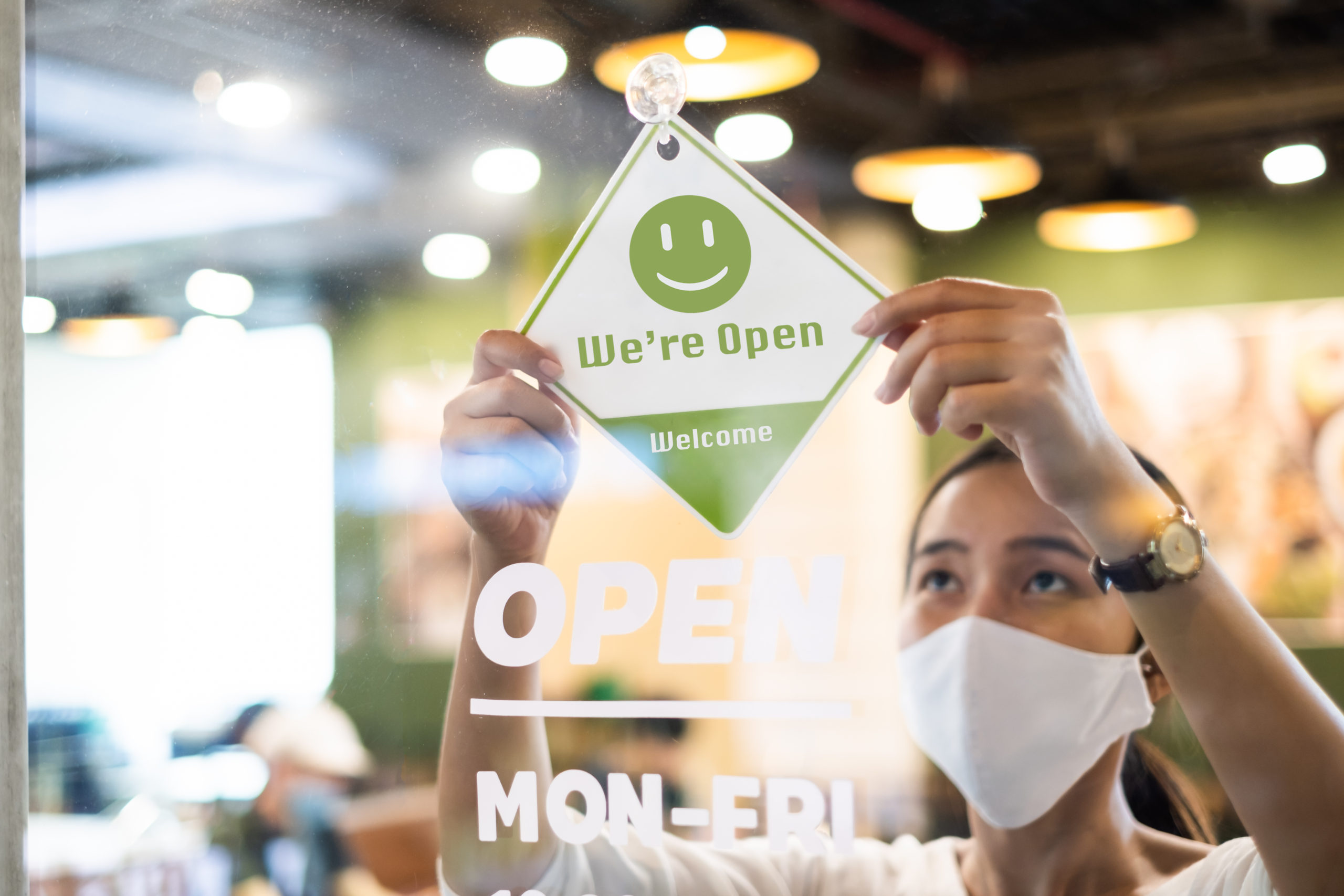Your business is about to reopen after the COVID-19 lockdown. You have a lot of process and details to handle to reopen. However, your customers, staff and other stakeholders have to trust your plans if they are going to show up. So, what can you say?
Here are five principles to get you started:
ONE: Safety first. As we’ve said before, the top priority for the foreseeable future is open and honest communication about what you’re doing to keep people safe. Employees and customers will not show up if they do not trust your safeguards and your commitment to safety.
-
- Communicate your safety plans before any other key information about reopening to make it clear that safety is your top priority.
- Communicate safeguards clearly to help stakeholders understand – distancing rules, signage, protective gear, etc.
- Make sure employees understand the safeguards so they can answer customer questions.
- Demonstrate how safeguards align with your state/local guidelines.
- Avoid a say-do gap by modeling the same safety safeguards you are asking of employees.
- Communicate appreciation for employee and customer cooperation
TWO: Set reasonable expectations about timing. There is nothing wrong with looking forward to reopening. However, it will probably happen in stages, so plan your communications around those stages, and be prepared to provide timely updates.
-
- Make it clear that progress depends on things like local infection levels, and new regulations and directives. Show you care about employee and customer safety, and frame your explanation in those terms.
- If you do not have all the answers yet, share the process you’re working through and what circumstances will guide decisions.
- Plan what to say about setbacks – e.g. an employee could become infected with COVID-19. Are you going to do a deep clean? What else? (Be careful to protect that employee’s privacy.)
THREE: Solicit and monitor feedback. Do your best to gather feedback, and make sure you are addressing the topics that stakeholders need to hear about. Review what you’ve already communicated for needed updates—instructional emails, help guides or any other materials.
FOUR: Explain new procedures and tools. If your business is opening in phases and will need to use online collaboration tools internally or with partners and customers, explain them.
-
- Step by step graphical guides and videos help, and often those can be found at the manufacturer’s/service-provider’s websites. For example, you can point stakeholders to instructions like these for Zoom and Slack. But, also be ready to talk some folks through the steps.
- Beware of the security risks of online collaboration tools – see recent press and federal government guidance about these issues.
- You may also want to warn employees about COVID-19 related scams and phishing. Refer them to recent guidance from the federal government and cybersecurity companies.
FIVE: Don’t forget the community. Are you doing something to help employees make ends meet? Are you helping raise money to help folks in need buy protective gear, for instance make people aware of that. It is not about bragging, but rather it is about making people aware of resources and opportunities to contribute. Corporate social responsibility is critical in a time of crisis and it’s an important part of your organization’s reputation.
For more COVID-19 communications tips, check out our blog here.

